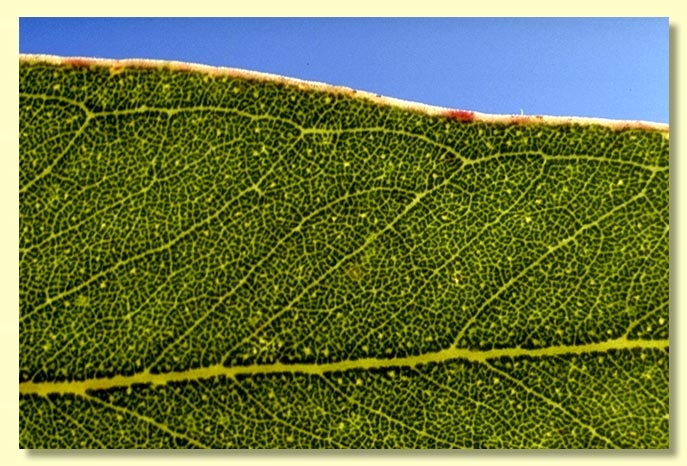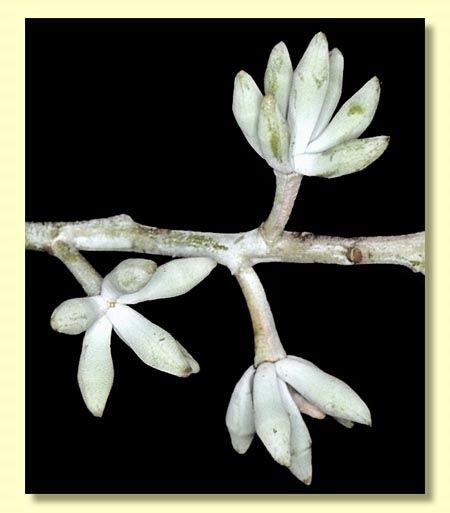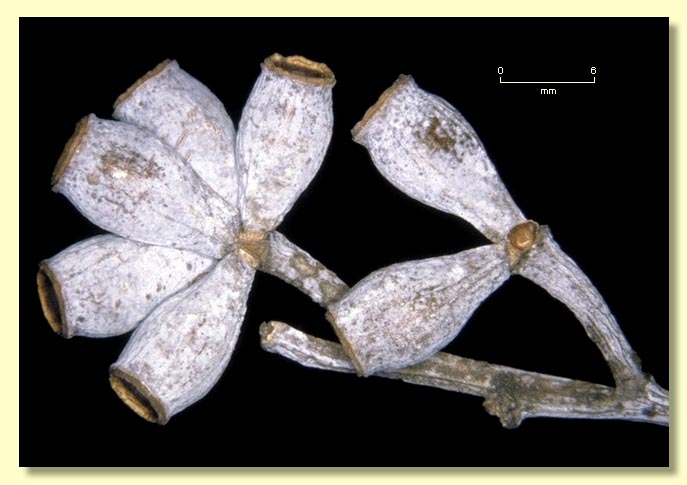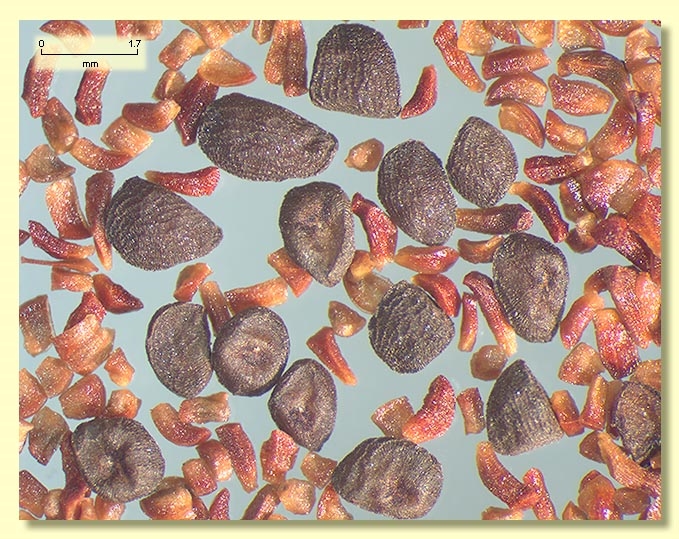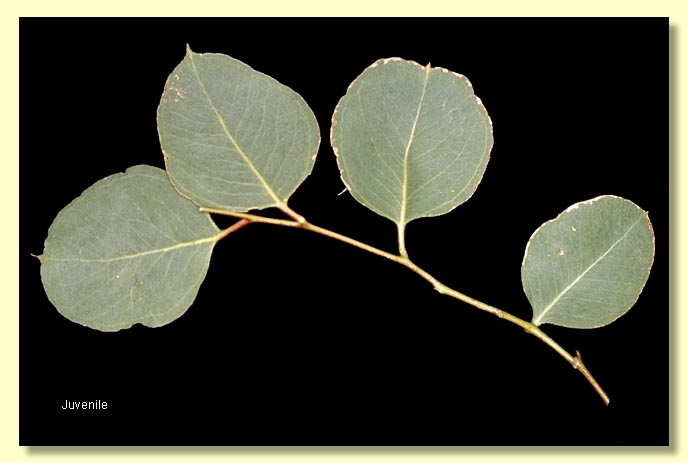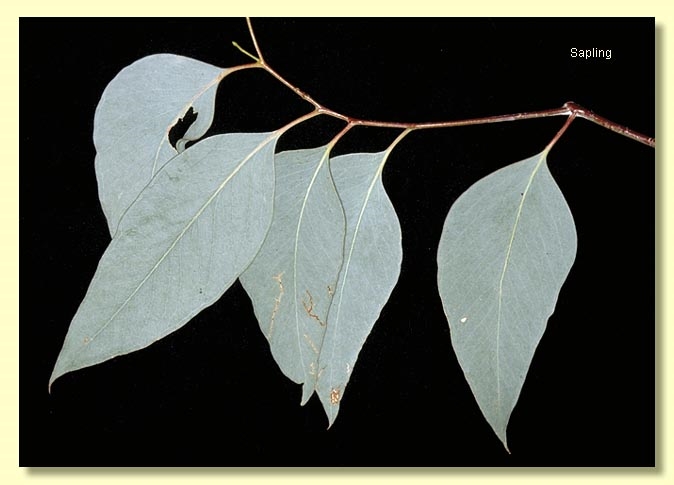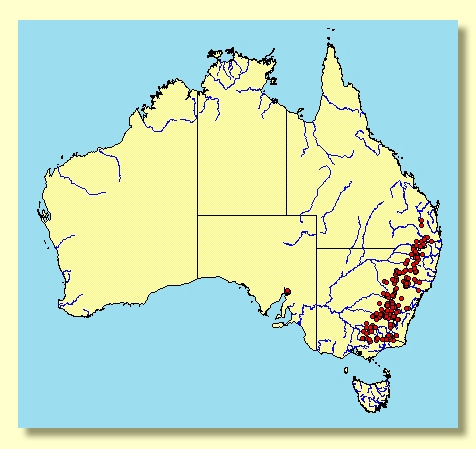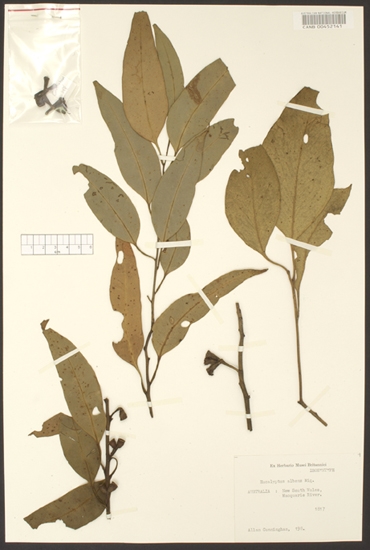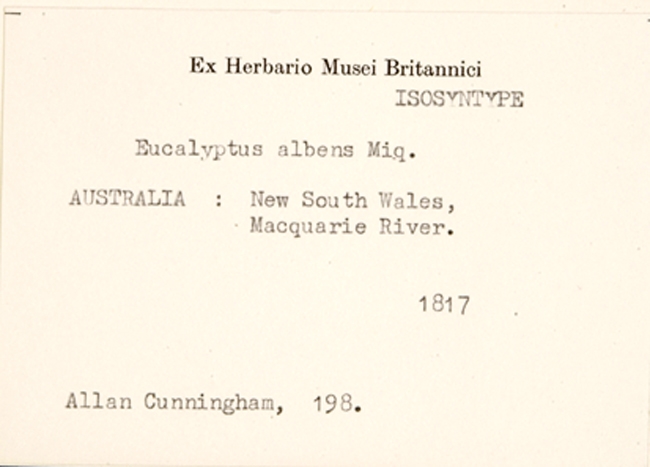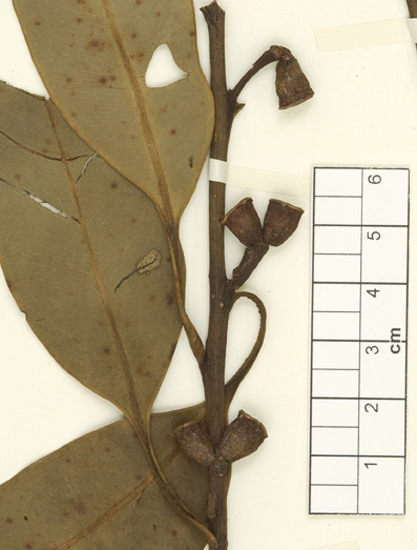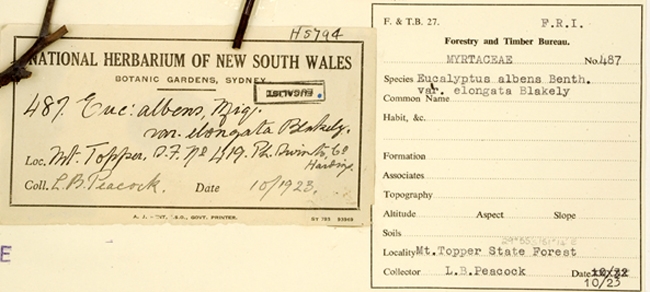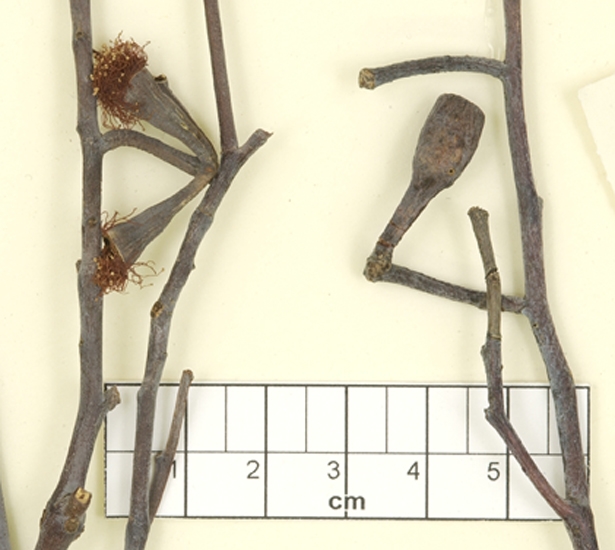Euclid - Online edition
Eucalyptus albens
Eucalyptus | Symphyomyrtus | Adnataria | Apicales | Buxeales | Continentes
Bark rough on most or all of trunk and base of large branches, rarely extending to branches < 8 cm diameter, box type, often becoming tessellated, pale grey or mottled grey and white patches, smooth bark of branches predominantly white, sometimes grey, or tinged orange, pink or salmon.
Branchlets usually glaucous, pith oil glands rarely present.
Juvenile growth (coppice or field seedlings to 50 cm): stem rounded or square in cross-section, glaucous or non-glaucous; juvenile leaves alternate, petiolate, orbicular, deltoid or ovate, 5–10.5 cm long, 5–10 cm wide, margin entire, blue-green, grey-green, or blue-grey or glaucous.
Adult leaves alternate, petiolate, 1.2–3 cm long; blade lanceolate to ovate, 7–16.5 cm long, 1.7–4.3 cm wide, base tapering to petiole, margin entire, concolorous, dull, blue-green, grey-green, blue-grey to glaucous, side-veins mostly greater than 45° to midrib, densely to very densely reticulate, intramarginal vein parallel to and just within margin or well removed from it, oil glands mostly intersectional or obscure.
Inflorescence terminal compound or axillary unbranched, peduncles 0.8–1.8 cm long, buds 7 per umbel, sessile or with pedicels to 0.7 cm long. Mature buds fusiform, often slightly curved, 0.8–1.8 cm long, 0.3–0.6 cm wide, glaucous or sometimes green, slightly angled, scar absent, operculum conical, stamens irregularly flexed, anthers cuboid, adnate to filament, dehiscing by broad lateral pores, style long, locules 3 or 4(5) each with 4 vertical ovule rows. Flowers white.
Fruit sessile or on pedicels to 0.5(1) cm long, cylindrical, urceolate or barrel-shaped, 0.6–1.4 cm long, 0.5–1 cm wide, often slightly angled longitudinally, glaucous or non-glaucous, disc descending, valves 3 or 4(5), enclosed.
Seed blackish, brown or grey, 1–2 mm long, irregularly flattened-ovoid, sometimes pointed at one end, lacunose or not, dorsal surface smooth or shallowly pitted, hilum ventral.
Cultivated seedlings (measured at ca node 10): cotyledons reniform to oblong; stems rounded or square in cross-section, usually glaucous; leaves always petiolate, opposite for 3 to 5 nodes then alternate, orbicular to ovate, 5–10.5 cm long, 3–7.5 cm wide, base rounded or truncate, grey-green to glaucous.
Flowering has been recorded in January, February, March, April, May, June, July, August and September.
A small to medium-sized box tree occurring from south-eastern Queensland extensively throughout the western slopes of New South Wales to north-eastern Victoria(as far as Yea) and far eastern Victoria (Wulgulmerang - Deddick area), with a small disjunct population near Melrose in the southern Flinders Range of South Australia. It has extensive pale grey to whitish box bark, large juvenile leaves that are grey to glaucous and pendulous, dull adult leaves that are greyish to glaucous and elongated usually glaucous buds. These features distinguish it from other box trees. In addition it occurs on more elevated, stony sites than the related box tree E. microcarpa.
Eucalyptus albens belongs in Eucalyptus subgenus Symphyomyrtus section Adnataria (the boxes) because the buds have two opercula, ovules are in four rows, seeds are flattened-ovoid, cotyledons are reniform, and anthers are rigid on the staminal filaments. Within section Adnataria, E. albens is part of a subgroup, series Buxeales subseries Continentes, further distinguished by having buds that retain the outer operculum until flowering time when both opercula are shed together. Most species in this group are from eastern Australia and have all stamens fertile and are woodland trees of hills and plains, often dominant in the landscape, viz. E. albens, E. moluccana, E. microcarpa and E. pilligaensis. The three latter species all have a green crown and non-glaucous branchlets, buds, fruit and juvenile leaves.
Other box species occurring within the general geographic range of E. albens are E. melliodora, E. polyanthemos subsp. polyanthemos and E. conica, all of which have outer stamens that are infertile (lack anthers). E. melliodora has axillary infloresences and more hemisperical to globular fruit, and much smaller juvenile and adult leaves than does E. albens; E. polyanthemos subsp. polyanthemos is smooth-barked and has shorter rounded adult leaves and smaller fruit (never more than 0.6 cm long), whilst the rough-barked E. conica differs from E. albens in having smaller obconical fruit (to 0.6 cm long), smaller juvenile leaves and a greener crown. Other box species, viz. E. viridis, E. polybractea, E. froggattii, E. odorata, E. albopurpurea, E. sp. Flinders Ranges and E. porosa are mallees of drier areas, (occasionally occurring as small trees) and are unlikely to be confused with E. albens.



